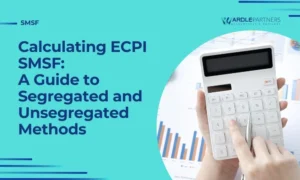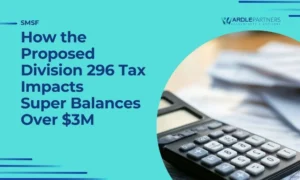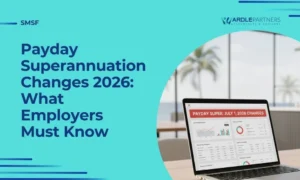Imagine owning a piece of Australian real estate through your own Self-Managed Super Fund (SMSF). It’s a powerful strategy many savvy investors consider, but it requires the right tools. This is where Limited Recourse Borrowing Arrangements (LRBAs) come in. Whether you’re new to SMSFs or looking to expand your investment portfolio, understanding how LRBAs work is crucial.
How Does an LRBA Work in an SMSF?
Let’s break it down. An LRBA allows an SMSF to borrow money to buy a property (or other permitted asset types) using loan funds that are tied only to that asset. This means that if something goes wrong, like defaulting on the loan, the lender can only claim the asset bought with that loan—not the SMSF’s other assets.
Legal Requirements and ATO Compliance
Investing in property with SMSF funds isn’t something you can do casually. The ATO has strict rules around LRBAs to ensure SMSF trustees operate within the boundaries of superannuation law and don’t compromise the fund’s purpose: providing for retirement…
Advantages of Property Investment Through LRBAs
An LRBA is an SMSF borrowing strategy that enables your SMSF to access high-value assets like property without tying up all available funds, which can help your fund grow faster. Let’s say your SMSF has $400,000 and you want to buy a $700,000 property. With an LRBA, you can use some of your SMSF’s cash as a deposit, borrow the rest, and secure a larger asset than you could have otherwise.
Potential Pitfalls and Risks in SMSF Property Investment
While LRBAs offer unique opportunities, they’re not without challenges. Firstly, limited recourse loans often come with higher interest rates and fees, making them more costly than traditional loans.

Impact of LRBAs on SMSF Compliance and Tax Obligations
Complying with ATO rules around LRBAs is paramount. For example, SMSFs must use a bare trust structure to hold the property, and the loan must only relate to a single acquirable asset.
How to Manage and Maintain an LRBA Property Investment
Managing property within an SMSF structure requires careful attention to detail. Trustees need to ensure that all expenses related to the property, such as repairs, insurance, and maintenance, are paid from the SMSF account to remain compliant…
Making the Decision: Is an LRBA Right for Your SMSF?
Deciding to leverage an LRBA as an SMSF borrowing strategy is a big step for any SMSF. Here are some factors to consider: Fund Balance, Investment Strategy, Liquidity Needs, and Long-Term Goals…
Conclusion
An LRBA can be a game-changing strategy for SMSF trustees aiming to build wealth through property investment. By borrowing to acquire assets like property, trustees can amplify their investment power and grow the fund’s capital base…
Partner with Wardle Partners for Your SMSF Success
At Wardle Partners Accountants & Advisors, we understand the ins and outs of SMSFs and LRBAs, and we’re here to help you make informed, confident decisions. Our team can guide you through every step, from SMSF borrowing and structuring an LRBA correctly to ensuring compliance with the ATO’s requirements. We’re committed to helping SMSF trustees achieve their goals with precision and professionalism.
Ready to get started? Contact Wardle Partners Accountants & Advisors today and discover how we can help you unlock the full potential of SMSF property investment through SMSF borrowing strategy like Limited Recourse Borrowing Arrangements.
Did You Know?
According to the Australian Taxation Office (ATO), SMSFs in Australia hold over $880 billion in assets, with a significant portion invested in property. The SMSF sector has grown substantially over the years, with property investments being one of the fastest-growing asset classes.
Disclaimer:
This information is general in nature and does not consider your personal objectives, financial situation, or needs. For advice tailored to your circumstances, please consult a qualified financial advisor or tax professional before making any decisions.









